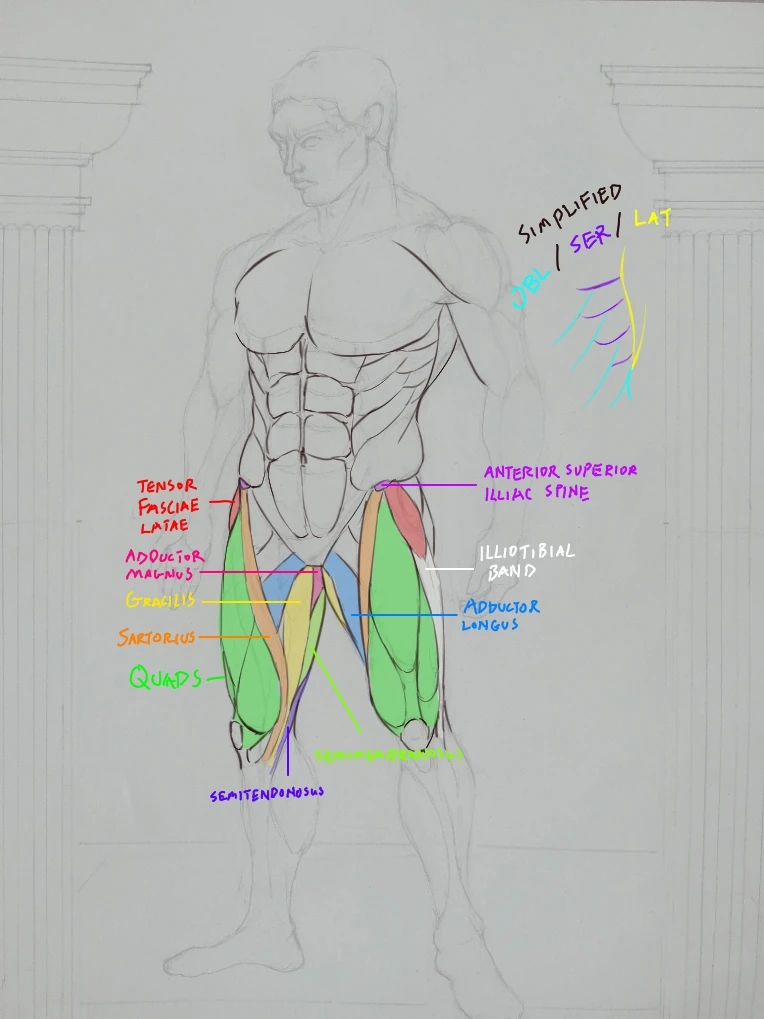I'm trying to replicate the style of ancient Greek statues and I wanted to make sure that the figure has the correct proportions and that the muscles are connecting properly. Any suggestions and redlines would be appreciated.
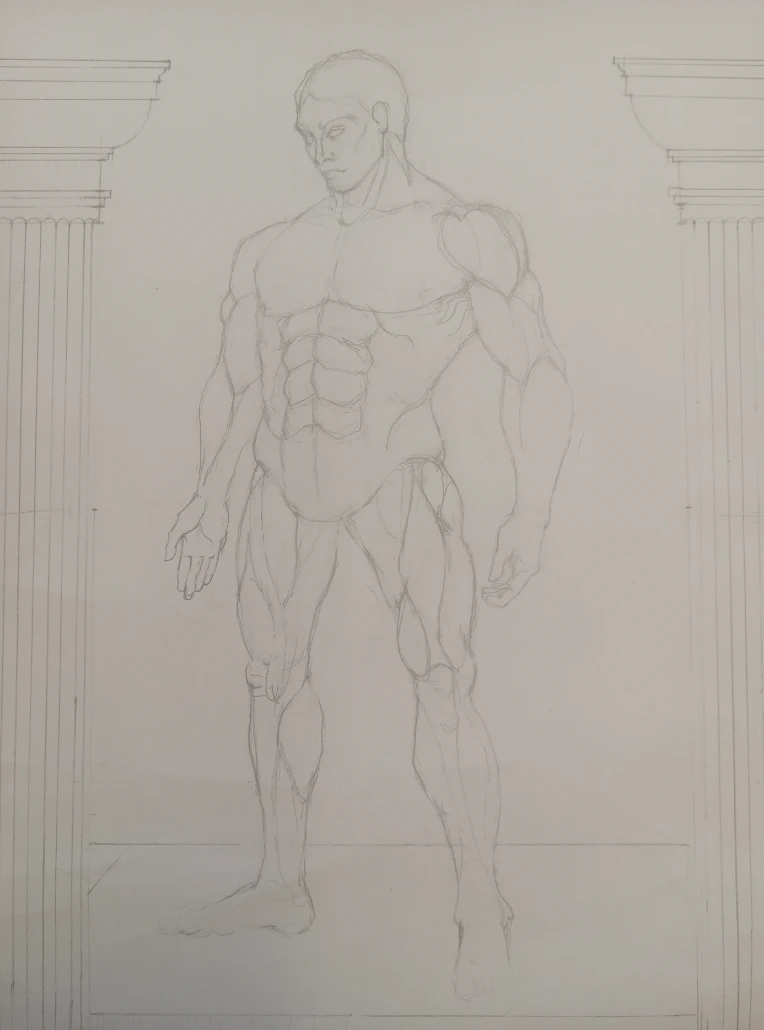

I'm trying to replicate the style of ancient Greek statues and I wanted to make sure that the figure has the correct proportions and that the muscles are connecting properly. Any suggestions and redlines would be appreciated.

I think most apparent issue would be that his hipbones are sort of shoved up into his torso and also that the legs seem proportionally too small compared to the torso overall
Is this from a reference?
Multiple references, actually. (I used these two images the most)
Also, do the upper legs need to be longer? Or do the lower legs need to be longer as well?

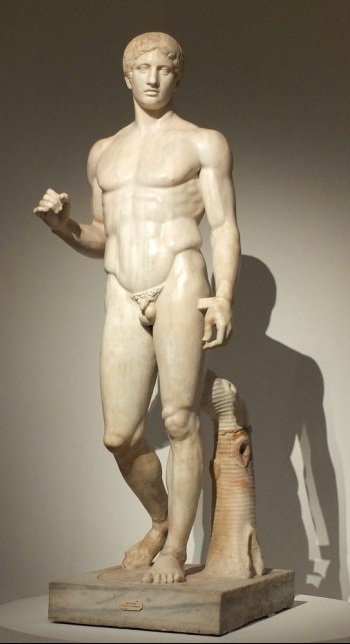
At 3/26/25 01:09 PM, MistaFlishka wrote:I'm trying to replicate the style of ancient Greek statues and I wanted to make sure that the figure has the correct proportions and that the muscles are connecting properly. Any suggestions and redlines would be appreciated.
A 7.5 heads proportion

See my profile page for link to showroom

Damn that statue has some generous lovehandles!
In general I may suggest mixing in photoreferences in as well to help determine decisions of the sculptor vs. the human form since they may differ in key areas due to artistic interpretation of a heroic form or just general sculptor's quirks.
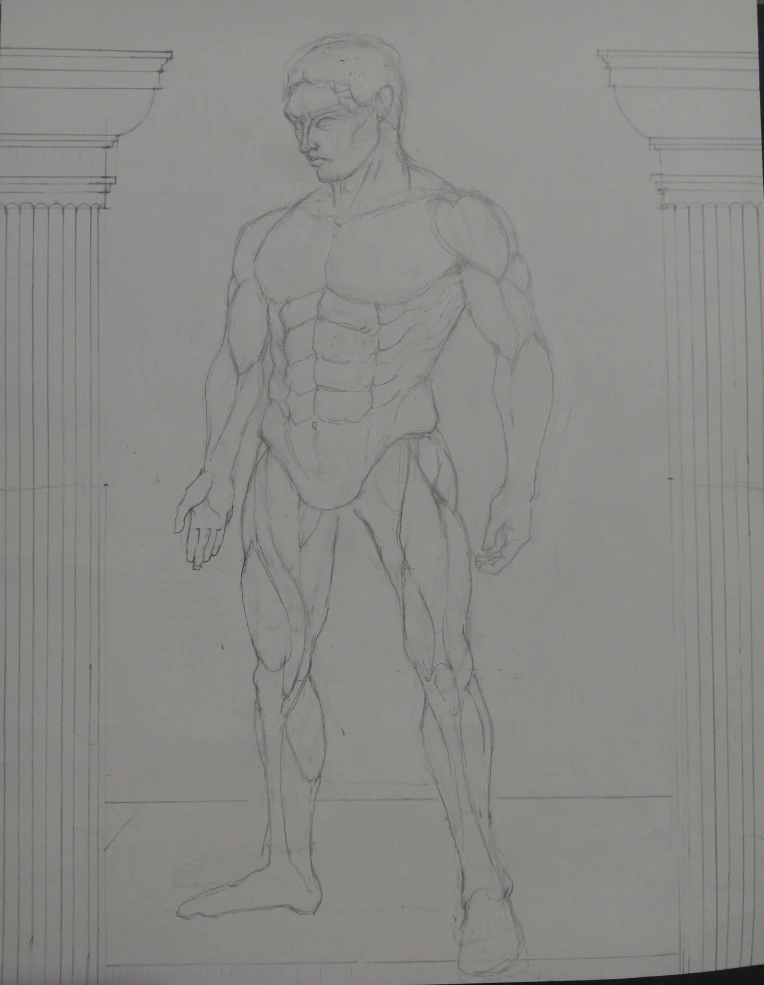 Thanks for the suggestions. I've made some changes to my drawing (slimmer torso, longer legs, larger head, position of chest and abs). If there's anything else to adjust, please let me know.
Thanks for the suggestions. I've made some changes to my drawing (slimmer torso, longer legs, larger head, position of chest and abs). If there's anything else to adjust, please let me know.
At 3/26/25 09:25 PM, MistaFlishka wrote:Thanks for the suggestions. I've made some changes to my drawing (slimmer torso, longer legs, larger head, position of chest and abs). If there's anything else to adjust, please let me know.
hmm i dont think you addressed the problem of the hips getting shafted into the torso part. It looks that part because your drawn figures are missing their crotch. Try drawing an underwear on them.
The legs are also too thin compared to the body. I want you to grab your upper arm with one hand and see the distance between your thumb and your middle finger. Then, grab your thigh with both hands trying to make the thumbs and middle fingers touch each other. Do you feel how much thicker it is?
here's a quick over sketch for your ref.
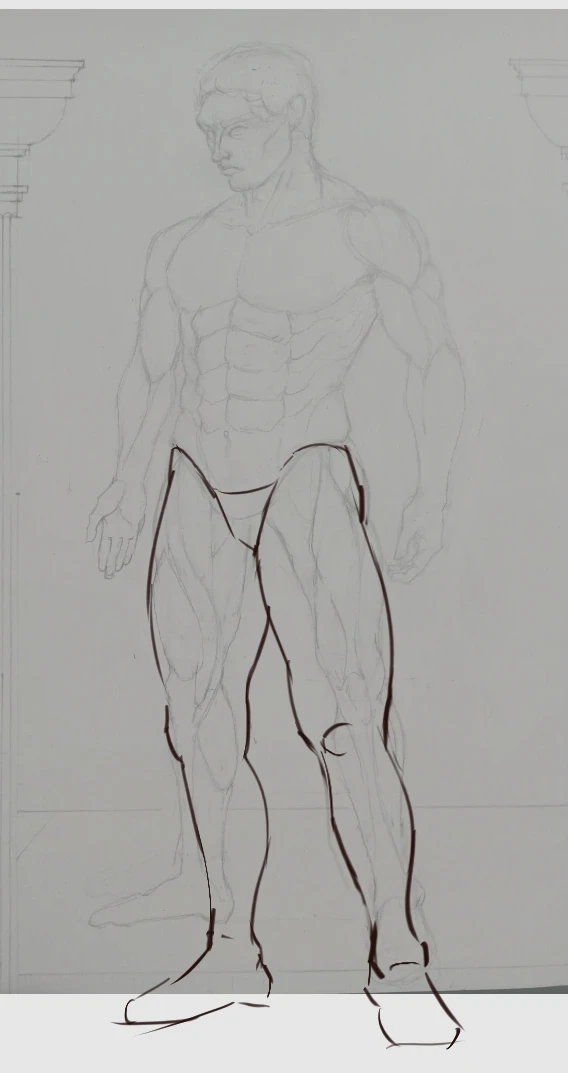
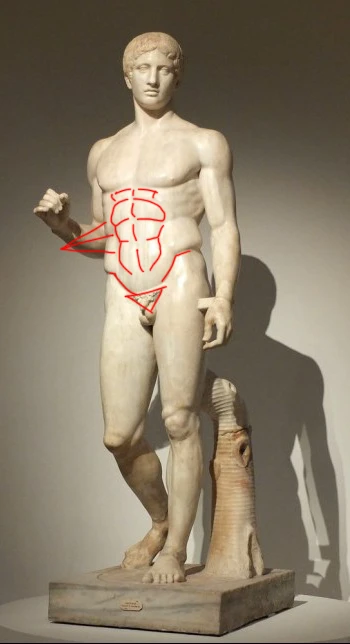
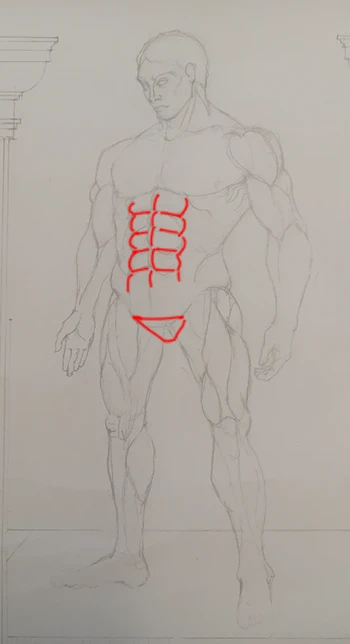
My critique is focusing on the lower abdomen. Your rendering of the abdominal muscles are rectangular, straight and evenly distributed, while the statue demonstrates that each pair of abdominal muscles are sized differently and curved. Notice how the abs dip into the areas between the ribcage and the obliques. The silhouette lets you see how they hang over the ribcage and falloff over the belly. Also, I know a lot of artists are embarrassed to draw genitals so I'm not gonna tell you to do it, but in the absence of genitals, the pelvis and groin area shouldn't be neglected. Without it, it feels like the model is missing part of the pelvic bone.
I would recommend consulting Dr. Paul Richer's Artistic Anatomy as a reference or anything from a later period because Renaissance drawings tend to be over-generalized and they make it hard to discern what parts you are drawing. I know the hanging corpse is cool, but they didn't have the medical facilities to make proper studies at the time because it was taboo and you don't want to lose sight of what you're depicting. Some food for thought!

I finally understand legs... (I think)
Thank you lucifertan for helping me make the legs look a bit more natural. I couldn't make the legs long enough because they would go over the edge of the paper. Also, thank you PinmoBOT for helping me out with the abs.
One thing that I'm struggling with is drawing out the muscles for the external obliques and the serratus anterior, so if anyone has any tips for these two areas or some more critique, please let me know.
At 3/28/25 02:42 PM, MistaFlishka wrote:
I finally understand legs... (I think)
Thank you lucifertan for helping me make the legs look a bit more natural. I couldn't make the legs long enough because they would go over the edge of the paper.
sad fact with working on paper lol but yeah i think you're getting the crotch part and the thickness of the legs with the current iteration. let's address problems with the muscular anatomy next.
the main muscles i think you are missing/have trouble understanding is the tensor fasciae latae and the sartorius. both are muscles that originate from the anterior superior illiac spine (ASIS). rectus femoris of the quadriceps originates from the anterior inferior illiac spine which is slightly below the ASIS. you can think of sartorius as the border between quadriceps and adductor muscles. the tendons of sartorius, gracilis and semitendonosus conjoins together when they insert on to the tibia.
One thing that I'm struggling with is drawing out the muscles for the external obliques and the serratus anterior, so if anyone has any tips for these two areas or some more critique, please let me know.
before i go into that i think chest needs to be larger, generally its height would be half of the rib cage. serratus anterior is mostly a subsurface muscle that originates from the ribs and inserts on the scapula. generally you can only see 4 to 5 of them due to the chest muscle covering them. lat muscles also go over them on the lateral side which you missed in your drawing. external oblique also originates from the ribs but while serratus anterior is in line with the ribs, their fibres travel diagonally towards the midline. thus, serratus inferior and external oblique have an almost criss cross like relationship.
